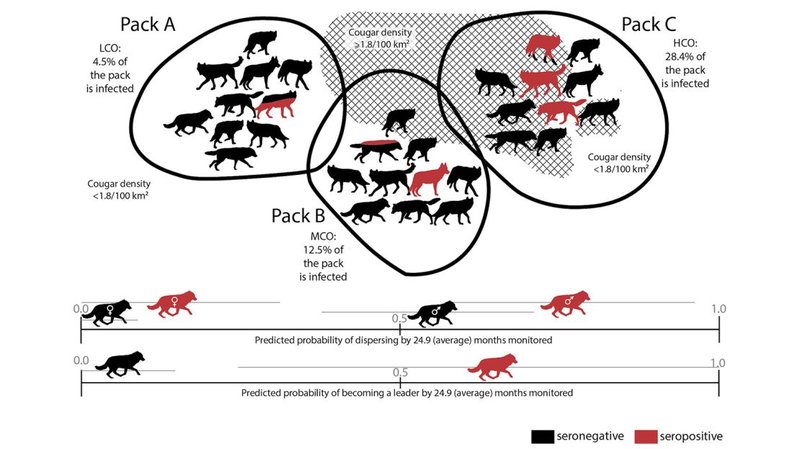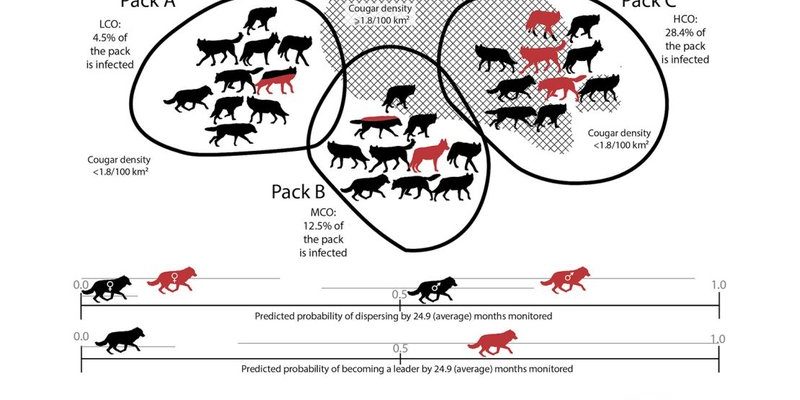
When you picture a wolf worm, you might envision a creature that just causes trouble for its host. While they do have that reputation, their presence is part of a larger story in the world of parasites. Let’s dive in and untangle the role of wolf worms in parasite ecology, and you might find they’re not as villainous as they seem.
What Are Wolf Worms?
Wolf worms, scientifically known as *Cuterebra*, are a type of botfly larva. These larvae are fascinating in their life cycle. The adult botfly lays its eggs on or near the host animal, usually in areas where the host goes by frequently. When the host gets close, the eggs hatch, and the larvae burrow into the animal’s skin. Yep, it sounds a bit gross, but that’s nature for you!
Once inside, wolf worms grow and develop in the host’s body. Over time, they create a “hole” through which they breathe, making them unique among parasites. This relationship is a bit like a tenant renting a room—they have their own space but also rely heavily on the host for survival. Typically, wolf worms are found in North America and can impact a range of small mammals, which is crucial for understanding their ecological niche.
The Life Cycle of Wolf Worms
Understanding the life cycle of wolf worms helps clarify their role in the ecosystem. So, let’s break it down into stages:
- Egg Stage: The mother botfly lays eggs on or near potential hosts.
- Lava Stage: The eggs hatch and the larvae enter the host’s body through the skin.
- Development Stage: Inside, the larvae grow, feeding on the host’s tissue while simultaneously breathing through the hole they’ve created.
- Emergence Stage: Once fully grown, the larvae exit the host’s body to pupate and eventually become adult botflies.
This cycle can take several weeks to months, and during this time, the host experiences different health effects. You might be wondering how the host is affected by having a wolf worm on board. While some hosts can suffer severe tissue damage, many can recover once the larvae exit. It’s a delicate balance, often resembling a dance where both parties have parts to play.
Ecological Impact of Wolf Worms
Wolf worms might seem like they’re just causing trouble, but they actually contribute to their ecosystem in meaningful ways. For one, they can act as population control for their hosts. When wolf worms infest small mammals, they can reduce host populations, which can benefit the overall health of an ecosystem.
Also, the presence of wolf worms can lead to healthier genetic pools among prey species. When individuals with weaker immune systems or overall health are the ones infested, natural selection kicks in. Healthier animals are more likely to thrive and reproduce. Here’s the thing—nature has its way of keeping things balanced, and wolf worms play a part in that balance.
Wolf Worms and Other Parasites
Wolf worms aren’t the only players in the world of parasites. There are many types of parasites, ranging from the more common ones like ticks and fleas to others such as heartworms. Each of these parasites has its own set of impacts on host animals and, consequently, on the ecosystems they inhabit.
Comparatively, the relationship between wolf worms and their hosts can be less lethal than, say, ticks that can transmit diseases. While both are parasitic, wolf worms typically don’t kill their hosts but may cause significant suffering. This pushes us to consider the broader picture of how different parasites interact within their habitats.
Human Interaction and Wolf Worms
Wolf worms generally prefer their animal hosts, but humans can interact with them in ways that might surprise you. For example, pet owners need to be aware that their pets, especially cats and dogs, can also be affected by botfly infestations. This is where vigilant care comes into play, as inspecting fur and skin can help catch an infestation early.
When it comes to wildlife management and conservation, understanding the dynamics of wolf worm populations helps ecologists make better decisions. Since these larvae affect small mammal populations, monitoring their presence can help gauge the health of larger predator populations. It’s a classic case of “everything is connected,” and wolf worms are a tiny thread in that grand tapestry.
How to Manage Wolf Worm Infestations
If you suspect an animal—be it a pet or a wild creature—might have a wolf worm infestation, prompt action is crucial. Here’s what you can do:
- Observe Symptoms: Look for unusual behavior, such as excessive scratching or hair loss.
- Consult a Vet: If you suspect your pet is infested, a veterinarian can provide the best course of treatment.
- Preventative Care: Use preventative treatments for common parasites that can help keep your pets safe.
Taking these steps not only eases the discomfort for the animal but also reduces the risk of further complications. Honestly, a proactive approach can save a pet from unnecessary suffering and educate owners on the importance of maintaining their animal’s health.
Wolf worms might not seem like the most glorious creatures in nature, but they play an interesting role in parasite ecology. From their unique life cycle to their impact on small animal populations, they remind us that even the smallest creatures have a role to play in the larger story of life. By understanding their place in the ecosystem, we can appreciate the complex relationships that exist between species.
So, the next time you think about wolves, take a moment to consider their hidden companions—the wolf worms. They’re the unassuming but vital players in the endless dance of nature, constantly reminding us of how interconnected life truly is.

